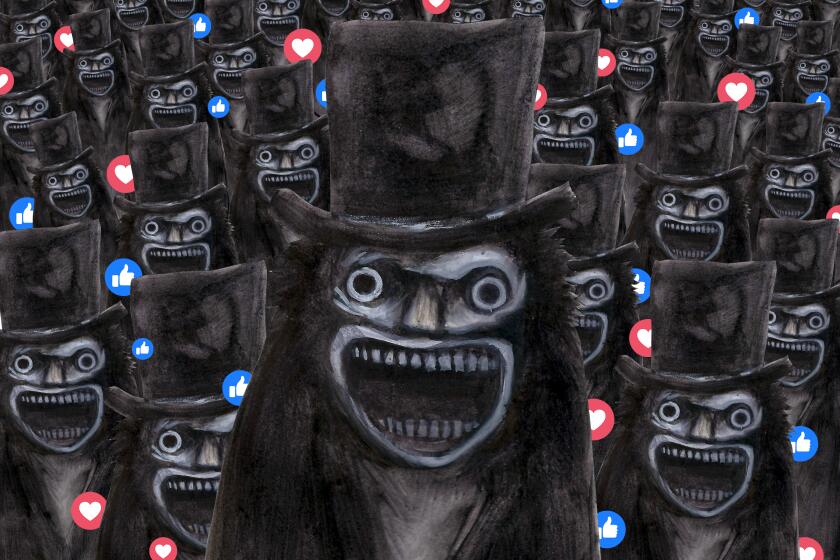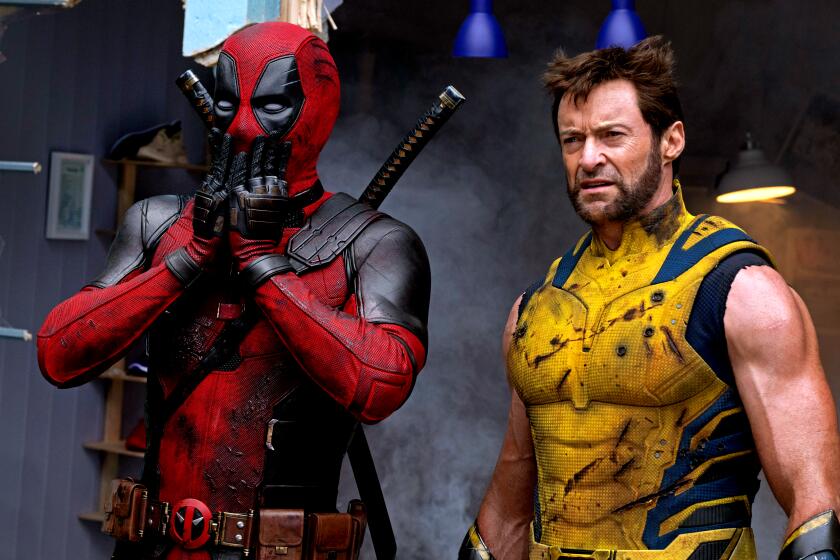A new look at smoking, and smokers, in film
Smoking may be less common in movies than has been perceived, researchers have reported, adding that those movie characters who do light up are more likely to be lower-class bad guys, not glamorized heroes.
By tracking the smoking habits of lead characters in 477 popular American films released from 1990 through 1998, researchers found that the smoking rate was similar to the smoking rate in the population at large: 23.3% in movies and 21.8% in real life.
“This is the first objective study of smoking in the movies,” said the study’s lead author, Dr. Karan Omidvari, a physician in the Heart and Vascular Institute at St. Michael’s Medical Center in Newark, N.J., who said that previous studies were subjective and sometimes unscientific.
R-rated films were more likely to include smoking than other films, he and his colleagues found, with 37.3% of R-rated films versus 16.2% of PG-13 films and 8.1% of PG films containing smoking.
Smoking was also far more common in independent films than in films made by large studios, with 46.2% of independent films depicting main characters smoking, but only 18.2% of Hollywood films.
“What surprised me is the callousness of independent filmmakers,” Omidvari said. The findings about the smoking rate in movies contradict previous research that had found smokers were often portrayed as successful and upper class and that smoking was significantly more common in cinema than in real life.
Some of those differences may be due to the current study’s methodology, which excluded science fiction films, G-rated films, and smoking that took place in flashbacks or was performed by foreign citizens or in a foreign country. The study also included only the 10 highest-grossing movies each week during the time period.
“I think it’s kind of misleading,” said Stanton A. Glantz, a professor of medicine at UC San Francisco. Glantz has researched the topic of smoking in films, specifically how media portrayals of smoking influence adolescents and young adults, and has been critical of moviemakers who include portrayals of the habit.
“It’s a tremendously powerful medium, it’s a tremendously emotive medium -- kids really, really relate to it,” he said.
Omidvari pointed out that his research does not show that filmmakers are portraying smoking negatively.
The antagonist of the film is often a complex and attractive character who drives the story line and may be just as appealing as the film’s hero. “It may be cool to be bad or anti-establishment,” Omidvari said.
People worried about the effect on young people of smoking in films don’t have any less to worry about based on his research, Omidvari said, but more education and awareness are needed to counter those influences.
Glantz, who advocates that smoking in a movie should earn it an R rating, said that curbing tobacco in films was a simple, cheap intervention that could prevent as many as 200,000 youths from starting smoking.
Omidvari agreed that films exert an undue influence on youth smoking behaviors but said parental involvement would be more appropriate than a mandatory R rating.
Kori Bernards, a spokeswoman for the Motion Picture Assn. of America, said that the film industry was aware that smoking is a serious public health risk and that studios have done a good job of reducing the amount of smoking in the movies. But, she pointed out, “Movies are about human behavior, and smoking is a human behavior.... Artists have to have the right to be creative in their works.”
Omidvari said that smoking in movies was simply unnecessary. “In an ideal world you wouldn’t show smoking at all.... It should be a dying trend.” The research was published in the August issue of Chest.
More to Read
Only good movies
Get the Indie Focus newsletter, Mark Olsen's weekly guide to the world of cinema.
You may occasionally receive promotional content from the Los Angeles Times.










